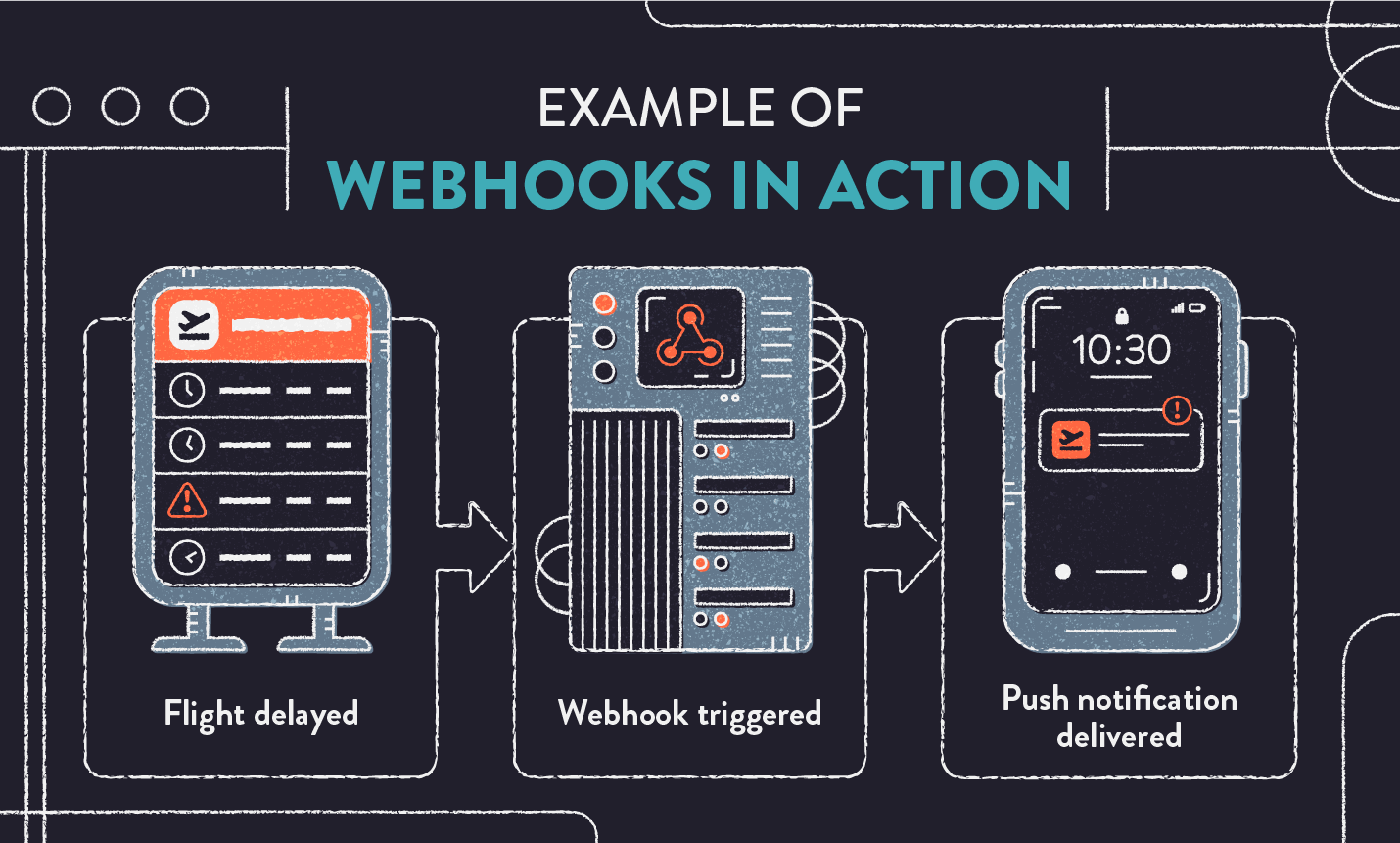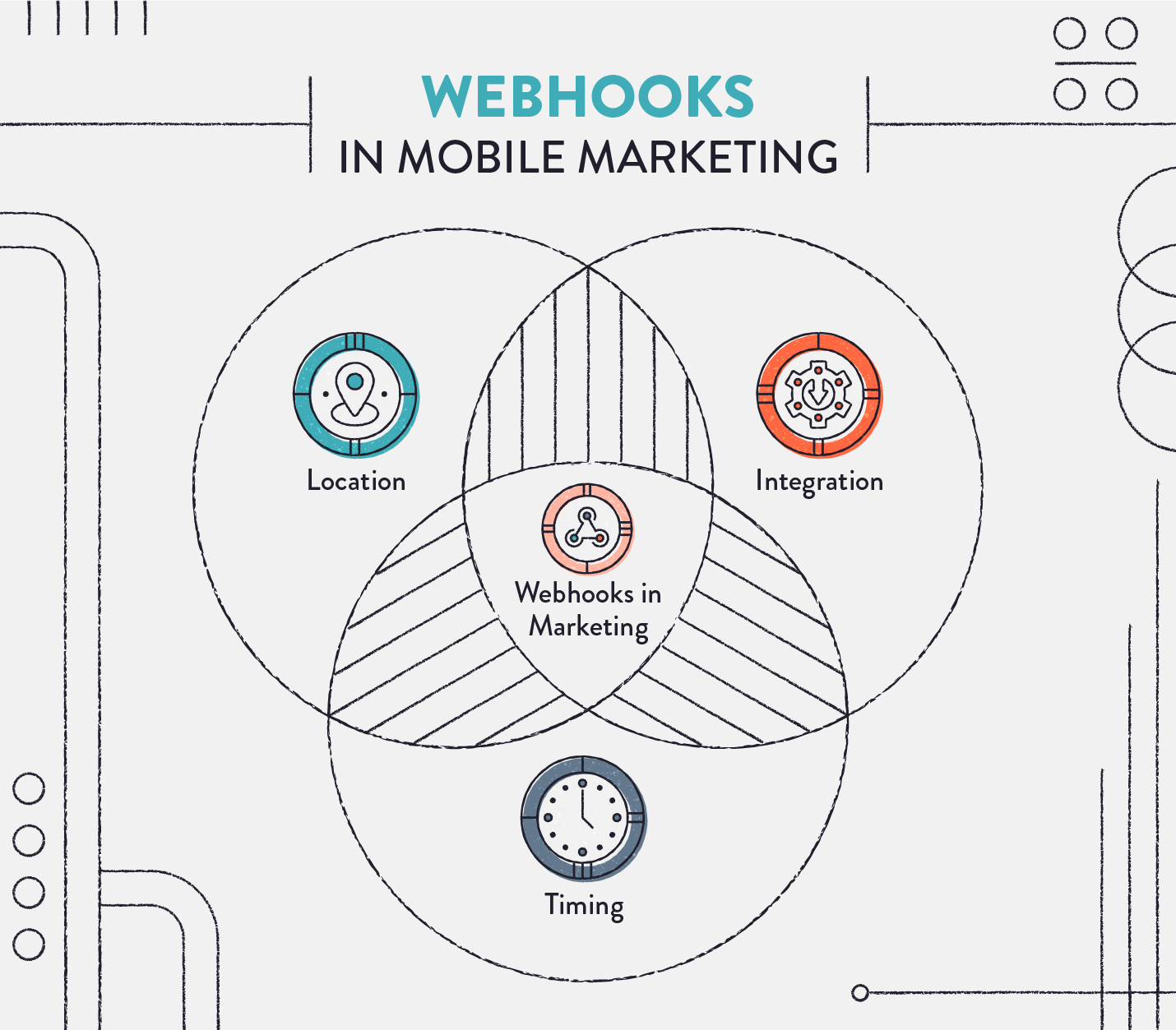When dining at a fine restaurant, the experience is seamless – your server attends to every need, from offering water to presenting specials and taking orders. Think of this impeccable service as webhooks, streamlining processes effortlessly. Now, envision an alternate scenario where you have to flag down your server for each request, akin to APIs lacking that smooth, automatic service. Remove the gourmet setting, and you’ll understand the distinction: webhooks offer the culinary delight of automation, while APIs might leave you missing the attentive service of a top-notch dining experience.
What are Webhooks?
Webhooks are a mechanism for real-time communication between systems or applications over the internet. They allow one system to notify another system about events or updates instantly. Instead of having to continuously check for updates, a system that supports webhooks can send a notification when there’s new information or an event occurs.
Webhooks serve as the invisible thread weaving together your digital experiences. Picture them as the behind-the-scenes waitstaff in a bustling restaurant. They’re the ones bringing your food promptly, updating you on your order’s progress, and discreetly delivering the check when you’re ready to conclude your dining experience.
In the realm of apps and accounts, webhooks play a similar role. They’re the reason your airline app seamlessly sends flight updates, your bank account shoots you SMS alerts based on activity, and your e-commerce services keep you in the loop about recurring purchases and subscriptions. Webhooks are the automated maestros orchestrating communication between mobile entities, eliminating the need for users to actively track every interaction.
In essence, webhooks are the “set it and forget it” marvels of customer engagement, ensuring a smooth and hands-free journey through the interconnected world of digital services.
Webhooks vs. API: What’s the Difference?
There are lots of ways apps interface with data either on their servers or from a third-party, and webhooks are just one of them. APIs (Application Programming Interfaces) are related, but there are some key differences between the two.
For example, webhooks are automatic. You don’t have to manually utilize them in order to make them work — once they’re set up, they run on their own. 
APIs, however, take a manual approach. They require you to request data — to get the attention of the waiter or check your bank for updated statements every time you make a purchase. It’s the extensive language of the app that can’t be spoken without being prompted, from communicating with another server to sending information to another app.02
How Does Webhooks Work?
Webhooks function seamlessly once set up, akin to a well-oiled machine quietly orchestrating communication between apps or websites. Their operation is simplicity in motion, far more straightforward than the structure of an API.
In human terms, think of a specific programmed event in an app, server, or webpage as pulling the trigger. This action initiates a response, and like clockwork, the response is smoothly delivered to the designated recipient. In contrast to the traditional model where you request data and wait for its delivery, webhooks flip the script. They proactively anticipate your needs, making requests on your behalf and delivering answers before you even think to ask for them. It’s the epitome of seamless, automated communication in the digital realm.
Examples of Webhooks in Action

Sit back and watch the action happen.
Webhooks have their roots in software development but are increasingly applicable to everyday uses. From your financial well-being to essential products you need to restock on a regular basis, webhooks can keep you informed across the board.
Read on for examples of how some top brands use webhooks to work their magic.
01. Qapital
We all know the savings rule, “pay yourself first,” but sometimes it’s hard to care more about saving money than you do about those event tickets or new shoes.
Qapital utilizes webhooks to streamline saving. Once you link your bank account, you can set up various “rules” to save money. Set goals for specific items or financial milestones, and tell Qapital how you want to save. The apps talk to each other so you can watch the money roll in.
For example, Qapital can round up to the nearest dollar when you use your debit card and put that difference into savings. Or, every time you get paid, it can automatically pull out that 20% you know you should be saving. That transaction or deposit triggers the webhook to act.
A push notification lets you know when the transfer is made and voila, you’re a money-saving machine.
02. Amazon
Amazon is the current king of fast delivery. They make it even faster by giving you the option to auto-subscribe to items you need regularly with their Subscribe & Save tool.
Amazon subscriptions save you money and send products right to your door at your scheduled cadence.
About two weeks out from delivery, Amazon sends an email with the projected delivery date, payment processing date, and lists the last day you can take action before the product ships. You can change the product quantity, delivery cadence, or cancel altogether from that one email.
Whether you forgot about that subscription the second you scheduled it or appreciate the action item prompts, these emails serve as great reminders for subscription users.
Webhooks will also automatically send the order information to the merchant at the time of subscription renewal execution.
03. Instagram + Other Social Media Platforms
Since the dawn of social media, multi-platform integration has been the name of the game for holding on to users. Instagram is no exception.03
When uploading an image, users are given the option to publish straight to Facebook, Twitter, and Tumblr if they’ve linked their accounts. Instagram sends the information straight from its interface to the linked apps via webhooks, instead of you having to manually upload the information on a separate platform. This enables a streamlined social media experience and precious time saved.
Not just the social media influencers of today benefit from this feature — sometimes getting that picture of your dog out to all of your friends can’t happen fast enough and it’s nice to have a boost from your apps.
04. Robinhood
Robinhood is one of the newest financial management programs to take the world by storm.
Not only does it open the door to users who may not usually invest in stocks — all of their investments are commission-free and a user-friendly interface sure helps — it also utilizes webhooks to inform users. Those webhooks send out push notifications and email updates to keep users in the loop about big moves in stock prices, annual reports, and their personal holdings.
Gone are the days of waiting for a stockbroker for the latest updates. Webhooks here allow for more independent financial management and empowerment.
How Can Webhooks Be Used in Mobile Marketing?
Webhooks play a pivotal role in enhancing mobile marketing strategies by enabling real-time communication and automation. Here are several ways webhooks can be effectively used in mobile marketing:

So now that you know how webhooks work, how are they useful for your mobile marketing strategy?
- Push notifications are the butter to the bread of mobile apps. We all know attention spans are limited these days, and webhooks can help hook (sorry) your users in the short window you have. Don’t make your users look for promotions, new information, etc. — send it to them directly so they know what’s up.
- SMS has a high read rate, making it a great tool for delivering time-sensitive information. While similar to push notifications, SMS can work without the app interface, which can ultimately help you reach a wider customer base.
- Integration is important. The more seamless you can make a connection with a user’s existing programs and apps, the better. Find connections, holes in the market, or places where you can be an asset to an already existing company/app, or vice versa.
- Location, location, location. If your app or website can utilize location services, then use them. For example, set up a location-specific marketing tool like geofencing to entice users when they show up. Whether it’s a specific store or a particular event (like a music festival), crossing that invisible threshold can trigger an offer to get people to stay a while.
Hook, Line, and Sinker
When it comes to user engagement, the options to improve seem endless. If you’re at a loss, webhooks are some of the best tools to utilize. Take something off your user’s plate to make their experience smoother and easier to enjoy, and they’re much more likely to keep coming back.
CleverTap can help you hone in on some of the best ways to streamline your mobile marketing — request a demo today!

See how today’s top brands use CleverTap to drive long-term growth and retention
Subharun Mukherjee 
Heads Cross-Functional Marketing.Expert in SaaS Product Marketing, CX & GTM strategies.
Free Customer Engagement Guides
Join our newsletter for actionable tips and proven strategies to grow your business and engage your customers.














































